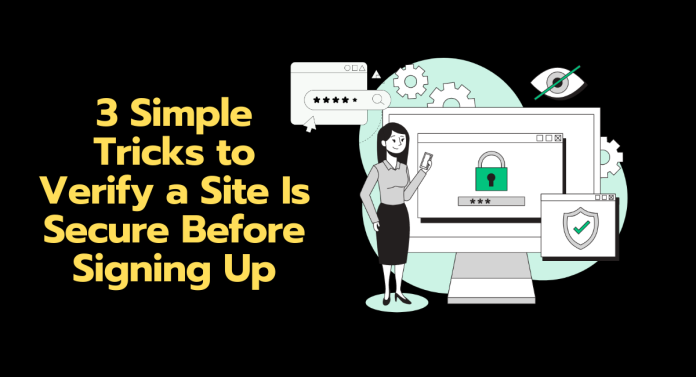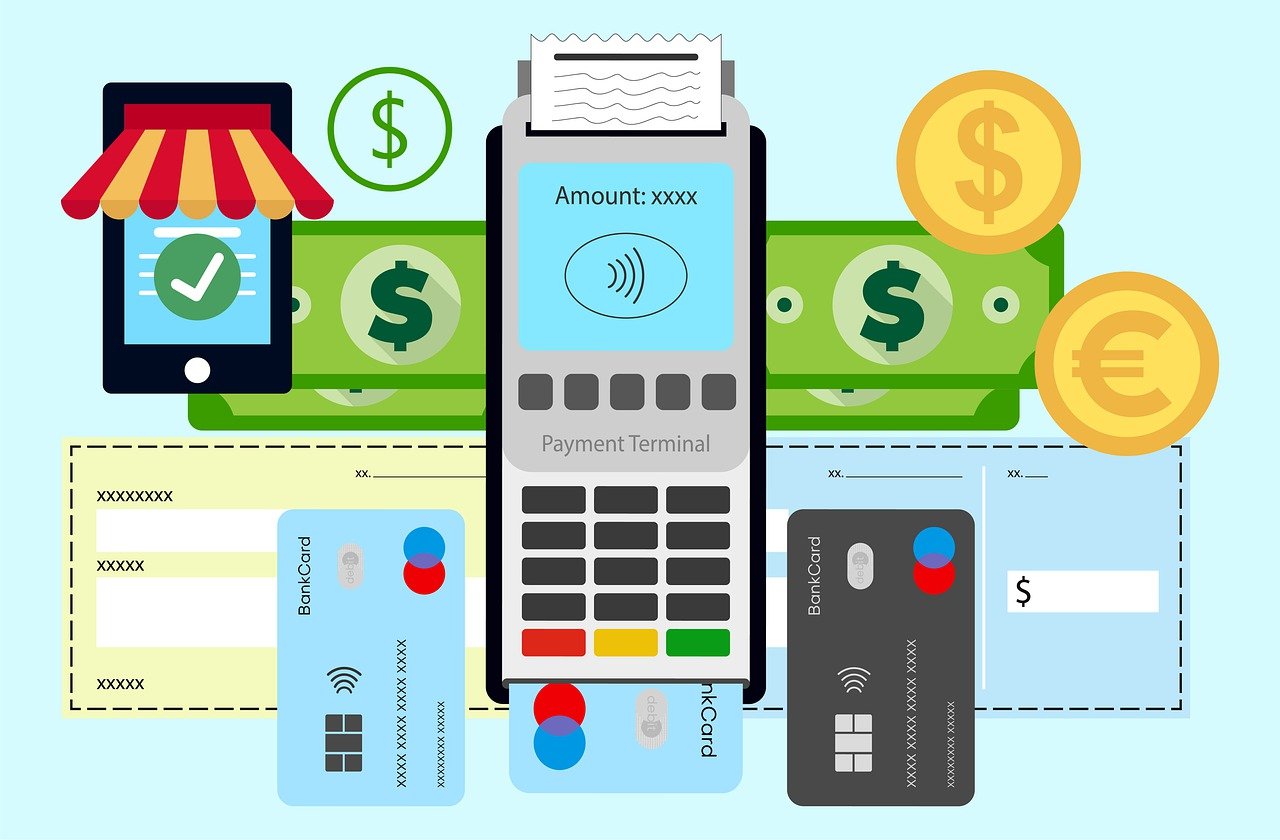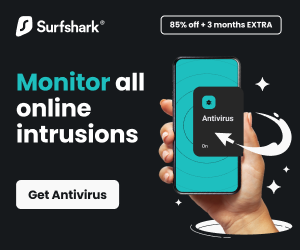In this post, I will show you 3 simple tricks to verify a site is secure before signing up.
Halt! Have you checked it’s secure? This is exactly the mindset forsigning up to a new website for the first time — be it for shopping, gaming, info, lifestyle, or joining a membership community. The whole process can feel properly boring and routine, and your mind can go straight on autopilot.
But just think… every time you hand over your email, personal deets, preferences, or card information, you’re trusting that site with your entire identity as well as your money. Cybercrime is rife, and has grown only more sophisticated over the past two decades, as the digital realm has become widespread.
Fake sites or cleverly disguised phishing emails and pages look more convincing than ever, so verifying a site’s security before signing up isn’t old fashioned paranoia; it’s basic “digital hygiene” for the everyday person.
This is especially true when money is on the line! Just think about the number of people you may know who register on new sites for shopping or online casinos and digital betting platforms for gaming (both of which make use of your financial details).
The latter especially leads people eagerly to claim a bonus or try a new slot. So, knowing how to check a site’s credentials first is as important as understanding things like casino wagering requirements, because both are about making sure you know exactly what you’re getting into. A secure website can still have strict terms, but at least you know your personal and financial information is protected from outright theft, which you want to always avoidf.
Let’s look at three practical, low-tech ways to tell if a site is safe to sign up to, thinking about elements that are simple enough for anyone to apply, but detailed enough to catch most of the common red flags.
Table of Contents
3 Simple Tricks to Verify a Site Is Secure Before Signing Up
1) Domain Research and Reputation
Just think, even a shiny SSL certificate won’t save you from a scam if the site itself is fraudulent! The trick is to look up the domain name, as scammers often use URLs that are very close to legitimate ones, changing just a letter or adding a hyphen. Take a moment to read the domain carefully and compare it with the official address you know.
Of course, there are loads of decent free tools, such as WHOIS lookups, to see when the domain was registered and who owns it. A brand-new domain registered anonymously may not always be a scam, but it’s another warning sign, especially if it’s claiming to be a big, established brand. Conversely, a domain that’s been active for years and has a named owner with a real address looks much more trustworthy.
Also, check online reviews and reputation scores and see what other users of the site are saying, because this is where you can often find useful discussions on forums or watchdog sites. Any pattern of complaints about missing payments, poor support, lack of contact, or disappearing accounts can reveal a problem before you ever sign up.
2) Check HTTPS and Valid Security Certificates
The first and most clear (and obvious) trick is to examine the web address bar. Secure websites use HTTPS (HyperText Transfer Protocol Secure) instead of plain HTTP. This means the data you send and receive is encrypted, making it far harder for hackers to intercept.
In modern browsers, you’ll see a padlock icon to the left of the URL, and clicking on it reveals information about the site’s security certificate. But don’t stop at just spotting the padlock!
Anyone can technically get a basic SSL certificate, so you have to look deeper by clicking the padlock or the “Site Information” tab to see who issued the certificate and for which domain, as reputable businesses typically have an extended validation (EV) certificate that lists their name or company.
While these EV certs are less common now, legitimate sites will at least have a certificate issued by a recognized authority (you can find these with a quick search online). Of course, if the browser warns you of an invalid certificate or mismatched domain, treat it as a red flag!
That doesn’t always mean the site is malicious, but it’s a clear sign you shouldn’t enter personal info until you know what’s fully going on- Think of HTTPS as the seatbelt: it won’t guarantee your safety in every scenario, but you’re at much greater risk without it!.
3) Evaluate Payment and Privacy Methods
Lastly, a site’s payment options and security policies tell you a lot about how it handles customer info, as a legitimate site typically offers well-known payment gateways (think PayPal, Stripe, Visa, Mastercard, and others) rather than obscure processors or cryptocurrency-only payments. Established payment providers have their own security vetting, so the presence of these options is a good sign!
On top of this, you can read the site’s privacy policy and terms of service. Yes, indeed everyone agrees that they are universally boring (not to mention often time consuming), but they’re also a space you’ll find out how your data is stored, whether it’s shared with third parties, and what recourse you have if something goes wrong. If the policy is vague, non-existent, sketchy or riddled with errors, that’s a signal to think twice before you act and move ahead.
Another useful check is whether the site supports two-factor authentication (2FA) for account logins, an extra layer of protection, as well as clear contact information (a physical address, a phone number, and/or a customer-service email). Scam sites often hide behind contact forms or provide no details at all.
Small Effort, Big Pay Off
The online realm is great, but full of risks if you’re unaware, such as malicious messages and email scams. By applying these three simple tricks: checking HTTPS and certificates, researching the domain, and evaluating payment methods and policies, you’re giving yourself a large and powerful layer of protection.
It’s not about being paranoid, it’s about staying informed and aware of those red flags that say to the prepared, “do not enter”. Next time you’re ready to sign up for a new website, just slow down long enough to verify it’s the real deal — think of it as a quick security checklist!
INTERESTING POSTS
About the Author:
Amaya Paucek is a professional with an MBA and practical experience in SEO and digital marketing. She is based in Philippines and specializes in helping businesses achieve their goals using her digital marketing skills. She is a keen observer of the ever-evolving digital landscape and looks forward to making a mark in the digital space.










